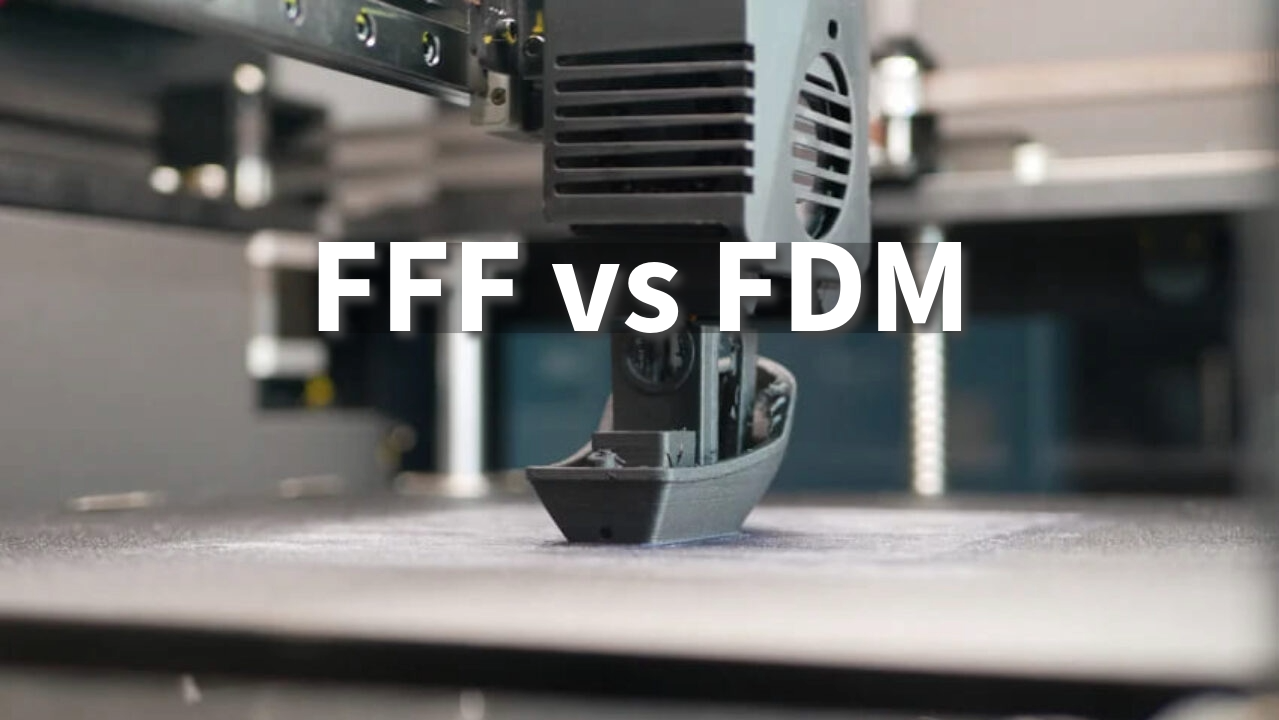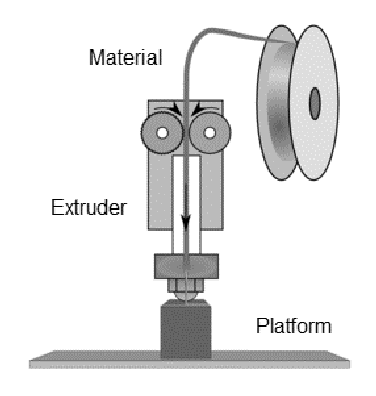FFF vs FDM: Identical Technology, Different Names

Learn the origins of FFF and FDM 3D printing - the same process with different names.
Introduction
Fused Filament Fabrication (FFF) and Fused Deposition Modeling (FDM) are two of the most common techniques for desktop 3D printers that create models from filament (plastic string).
While FFF and FDM describe the same 3D printing process, FDM started out as a trademark and thus set the difference. Understanding the relationship between these terms can help clear up confusion.
While FFF and FDM describe the same printing process, FDM originally began as a trademark name. This created a difference between the terms. Knowing they are really the same technique can help clear up confusion.
The Difference between FFF and FDM
Origin of the Names
FDM (Fused Deposition Modeling): This term was trademarked by Stratasys, the company that pioneered the technology in the late 1980s. Due to this trademark, only Stratasys and their licensed partners can use the term "FDM" to describe their machines and processes.
FFF (Fused Filament Fabrication): As the technology became more widespread, especially in the open-source and hobbyist communities, there was a need for a non-trademarked name. The term "FFF" was coined to describe the same process but without legal restrictions.
Identical Process
Both processes involve extruding a thermoplastic filament through a heated nozzle to build parts layer by layer. The printer lays down material according to a predefined path, creating the object from the bottom up.
Technology Access
FDM: Refers specifically to machines and processes developed or licensed by Stratasys.
FFF: Used by both consumer-grade and industrial-grade 3D printers that are not produced by Stratasys. Even though the technology and processes are the same as FDM, manufacturers outside of Stratasys must use the term "FFF" to avoid trademark issues.
Applications
FDM: These printers are typically from Stratasys or licensed partners. Commonly used in professional and industrial settings.

Source: teamfdm.com
FFF: Initially popularized in the open-source and consumer markets for personal, educational, and prototyping use, FFF has also become widely adopted in industrial-grade printers. Many high-performance 3D printers outside of Stratasys use the term FFF.

Source: cults3d.com
FDM and FFF: The Same Technology
Both FFF and FDM describe the process of 3D printing by layering thermoplastic materials. Here is a closer look:
Melting and Extruding
Both methods use a heated nozzle or print head to melt thermoplastic feedstock materials like ABS or PLA plastic filaments. The melted plastic is extruded from the nozzle layer by layer as the nozzle moves according to the digital design.

Source: researchgate.net
Stacking Layers
As each new layer is deposited, it bonds to the layer below through a process called interlayer adhesion. This happens as the hot extruded plastic cools and hardens before the next layer is put down. By precisely stacking many thin layers, an entire 3D object can be formed with complex shapes not possible with traditional manufacturing.
When Does the Name Matter?
For companies, choosing the proper terminology is important for branding marketing and intellectual property protection.
However, for most users, understanding the technology itself is more important.
Conclusion
FFF and FDM refer to the same 3D printing method, even though they began as different trademarks.
For both users and experts, the terms aren't as important as understanding how the technology works. Whether you call it FFF or FDM doesn't matter - the process is the same: It melts plastic and prints objects layer by layer.
Partner with Unionfab for Expert FFF/FDM 3D Printing Solutions
At Unionfab, we use advanced FFF (also known as FDM) technology to deliver precise and reliable 3D printing solutions. Whether you're prototyping or producing functional parts, our expert team is here to help you achieve the best results.
Contact us today to explore how our 3D printing services can bring your project to life!


